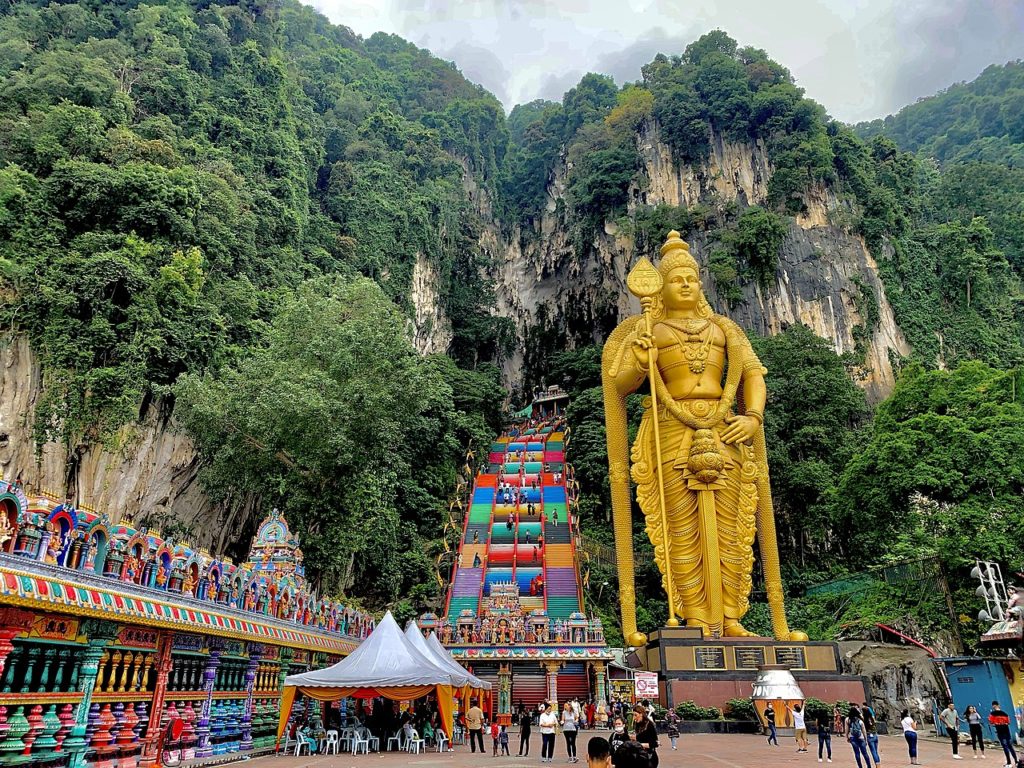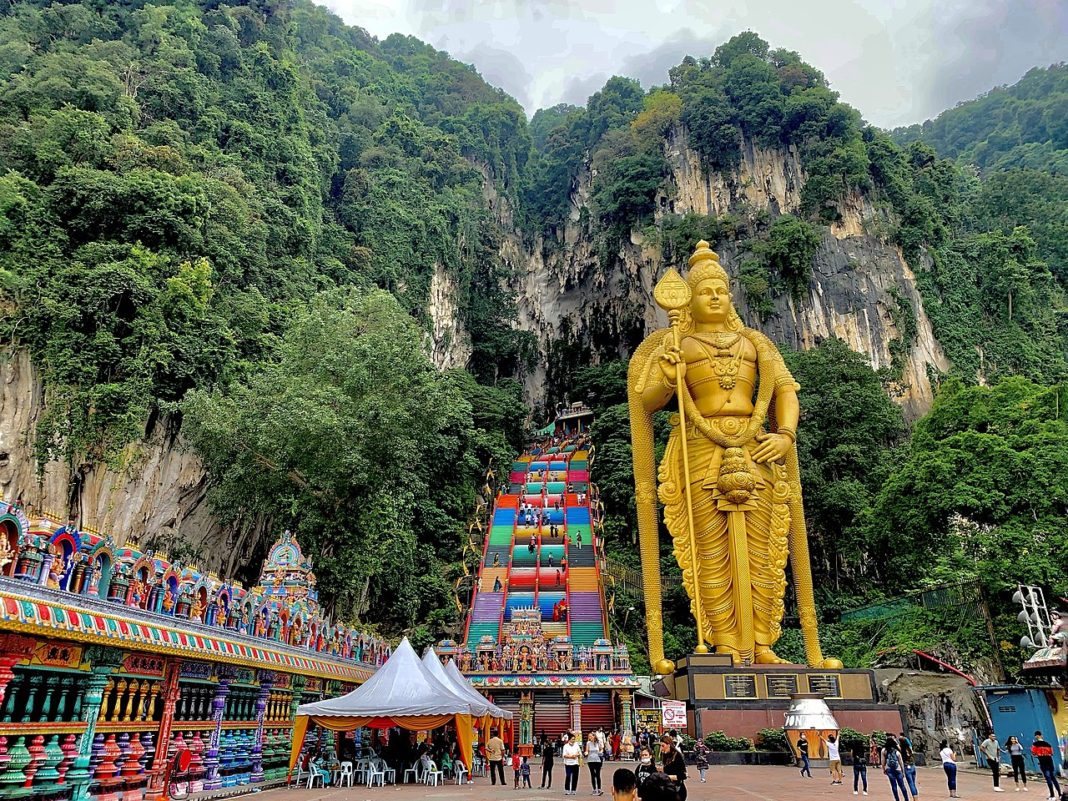Kuala Lumpur is divided into separate districts, each known for something extraordinary. However, the main draw of the city is the Golden Triangle comprising of Bukit Bintang, KLCC and Chinatown areas. Popular as the entertainment hub of the city, these are home to some of the trendiest nightclubs, lounges and bars.
Kuala Lumpur is a non-stop banquet. Drom dining at lavish restaurants to eating with the locals at the street stalls, almost all of Malaysia’s culinary specialities can be found in KL. Do stop by the hawker stalls and traditional neighbourhood kopitiams (coffee shops) to sample the best of the local delicacies. Kuala Lumpur is also the gateway to Malaysia’s contemporary art scene with numerous visual arts gallery and exhibition centres.
Chinatown Kuala Lumpur
Kuala Lumpur’s Chinatown is the hub of food, accessories, clothing, and everything a tourist could ask for. It is one of the most colorful and vibrant areas of Kuala Lumpur. This place is a paradise for shopaholics and gourmands and provides ample sightseeing opportunities, such as the captivating Buddhist Temples, art galleries, traditional food, and coffee houses. The nearest station is Pasar Seni MRT Station.
 Chinatown is also referred to as ’Chee Cheong Kai’ (Starch Factory Street) which a Chinese opened at the street to prevent his fellow countrymen from going back to their home country after the Civil War abandoned the mills they worked at. Spread on the entire street, there are rows of stalls making available fake branded items. Chinatown in Kuala Lumpur is still bright and glowing after sunset, it is a space which never sleeps.
Chinatown is also referred to as ’Chee Cheong Kai’ (Starch Factory Street) which a Chinese opened at the street to prevent his fellow countrymen from going back to their home country after the Civil War abandoned the mills they worked at. Spread on the entire street, there are rows of stalls making available fake branded items. Chinatown in Kuala Lumpur is still bright and glowing after sunset, it is a space which never sleeps.
Batu Caves
Batu Caves is a series of limestone caves and one of the most popular Hindu shrines located outside India. It is situated about 13 kilometers north of Kuala Lumpur in the district of Gombak, making it an unmissable day trip from the city. The main highlight of the Batu Caves is 140 feet tall Murugan statue, the tallest in the world.

The limestone hill comprises three main cave temples among which the Museum Cave and Art Gallery Cave are located at the base (foot) of the hills that host different Hindu sculptures and paintings . The Cathedral or the Temple Cave is the largest cave that also happens to the most significant one. There are other multiple smaller ones like the Ramayana Cave, Hanuman Temple and Dark Cave.
Batu Caves features various idols of mythological importance. There is also an audio tour available for the tourists . There is a wide variety of flora and fauna to see here including some rare species that only grown in limestone. You should keep an eye out for the bats and the long tailed macaques.
Each cave requires a certain admission fee, other than the Temple Cave. To reach the temple cave , you have to climb up 272 steps ! The best time to visit Batu Caves is during the festival of Thaipusam that takes place with a 3-day procession during late January or early February.
Bukit Bintang
Bukit Bintang is Kuala Lumpur’s trendiest shopping and entertainment district housing swanky shopping centres, luxurious five-star hotels and sleek nightclubs. Popular as Bintang Walk, the most iconic attraction here is Pavilion KL.
 One of the most visited areas of Kuala Lumpur, Bukit Bintang is known for its thriving nightlife and major events like Merdeka celebrations, New Year’s Eve, parties and concerts. Drop by Bukit Bintang in the morning and spend the day shopping at numerous malls (some of the best in town), sample delicious local food at the nosheries sprouting out on every corner of Bintang Walk, and when you are tired, stop by any foot massage centre lining the streets.
One of the most visited areas of Kuala Lumpur, Bukit Bintang is known for its thriving nightlife and major events like Merdeka celebrations, New Year’s Eve, parties and concerts. Drop by Bukit Bintang in the morning and spend the day shopping at numerous malls (some of the best in town), sample delicious local food at the nosheries sprouting out on every corner of Bintang Walk, and when you are tired, stop by any foot massage centre lining the streets.
Being the city centre, it is very easy to reach Bukit Bintang through the excellent public transport of Kuala Lumpur.
Forest Research Institute Malaysia
Located in Selangor, Forest Research Institute Malaysia is one among the chief institutes in tropical forestry research in the world housing a multiplicity of flora and fauna. The institute provides an opportunity for camping at Perah Campsite, trekking at natural trails and picnic at Sg Kroh.
 Kepong Botanical Garden, Ethnobotanical Garden and Colours of FRIM are present at the institute for the visitors to explore. The other fascinating things to be done at the institute are taking a look at the Research Gallery, Malay traditional houses, Werland area, Arboretum and Silicified Wood.
Kepong Botanical Garden, Ethnobotanical Garden and Colours of FRIM are present at the institute for the visitors to explore. The other fascinating things to be done at the institute are taking a look at the Research Gallery, Malay traditional houses, Werland area, Arboretum and Silicified Wood.
According to holidify.com














